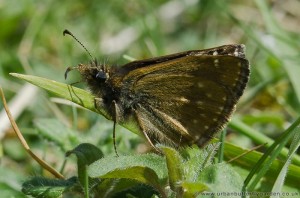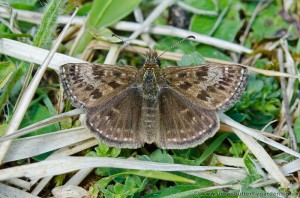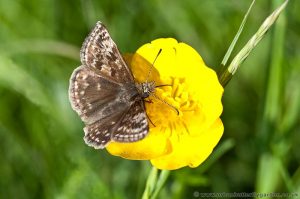Now localised to only just a few sites across Southern England, the Silver spotted Skipper is most likely to be found on short grazed chalk grassland from August to September.
It is small butterfly, around 34mm size and a particularly fast flyer in warm sunshine, its low darting flight often makes it difficult to follow even while nectaring.
Quick Info
- Family Group: Hesperiidae – Skippers.
- Habitat: close grazed grassland on chalkhills and downs
- When: August to September
- Adult Nectar Plant: Thistles (Cirsium sp), Scabious, Wild Marjoram (Origanum vulgare).
- size around: 34mm
- Caterpillars feed on: Grasses
- Photographed: 11th August, 2013 Aston Rowant, Oxfordshire.
From above with open wings, the Silver spotted Skipper is a golden yellow and brown colour, looking similar in appearance to the Large Skipper Butterfly (Ochlodes venata), the males have the black sex brand. The under-wings of both the male and female have the distinctive silvery white spots.
During periods of cloud cover on exposed hillsides they often rest low down amongst the grass stems or on a warm patch of bare soil, making them quite difficult to spot.






